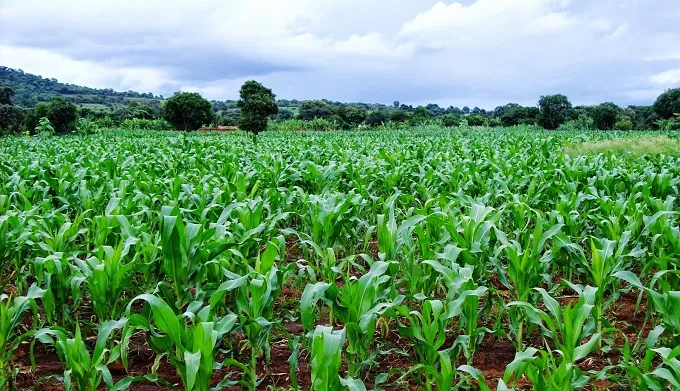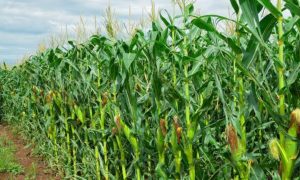Despite what some reports say, SA does not have a maize crisis

South Africa’s maize production for 2023-24 is 13.34 million tonnes, despite drought impacts. While this is down 19% from last season, it meets annual consumption needs. The country is importing maize from Brazil to diversify sources, not due to a shortage. Current exports to southern Africa total 567,000 tonnes, with a forecast of 1.85 million tonnes for the year. The imports and exports are part of strategic supply management, not a crisis response.
South Africa’s maize production for 2023-24 is 13.34 million tonnes, despite drought impacts. While this is down 19% from last season, it meets annual consumption needs. The country is importing maize from Brazil to diversify sources, not due to a shortage. Current exports to southern Africa total 567,000 tonnes, with a forecast of 1.85 million tonnes for the year. The imports and exports are part of strategic supply management, not a crisis response.
In much of southern Africa, maize can be considered a “political crop” because of its importance as a staple food and the vast extent of farmers’ involvement in its production. When there are droughts, we see the pain through reduced supplies, increased consumer prices and distressed farming villages.
The one country that is a slight exception is South Africa. Indeed, maize is among the most critical commodities in the country’s production values, but it produces many other vital commodities, which balances the conversation.
Moreover, South Africa, because of its advancement in seed breeding, tends to see milder crop losses than much of southern Africa.
The 2023-24 summer season was another drought period in southern Africa. Countries in the region lost a notable share of their staple maize crop. The proportion of maize crop losses differed from country to country. Zimbabwe and Zambia lost half of their maize crop, while South Africa is in a better position than some of the countries in the region.
For this reason, I found media articles that warn about “Fears of maize shortage in South Africa” unhelpful. The reports began when the South African agricultural authorities cleared the path for imports of yellow maize from Brazil.
This was done, not because South Africa had tariffs blocking Brazil but because its maize was of a different seed culture than we plant in South Africa. It ensured that if the coastal regions of South Africa desired to import, they could do so without many challenges.
From May to July, South Africa had already imported around 130,000 tonnes of yellow maize from Argentina for animal feed purposes. Brazil will add to the diversity of maize supply sources when the need arises. The imports for the 2024-25 marketing year could rise to 350,000 tonnes.
There is a fundamental issue here. South Africa is not opening up markets because we fear possible shortages; we are opening up markets to provide flexibility of supplies for yellow maize users in the animal feed industry.
South Africa does not have a maize supply crisis. Our maize production for the 2023-24 production season is 13.34 million tonnes, down by 19% from the previous season because of the midsummer drought. This volume comprises white and yellow maize: white maize production is about 6.35 million tonnes (down by 26% year-on-year), and yellow maize is at 6.99 million tonnes (down by 12% year-on-year).
White maize is planted predominantly in the western areas of South Africa and yellow maize in the east. Moreover, yellow maize is typically planted a month earlier than white maize. Rainfall affects these regions and timeframes differently, affecting the harvest sizes.
These figures are still tentative. There may still be adjustments in the coming months, particularly for white maize. But for now, we can utilise them as our best view of the reality.
Importantly, this expected harvest will meet South Africa’s annual maize consumption of roughly 12 million tonnes, leaving the country with about 1.85 million tonnes for exports (there is also a boost in our maize supplies from the carryover stocks from the previous season).
According to data from the South African Grains and Oilseed Supply and Demand Estimates Committee, in this export forecast, about 1.20 million tonnes are likely to be white maize and 650,000 tonnes yellow maize. Still, the estimated exports of 1.85 million tonnes are down notably from 3.4 million tonnes in the previous season.
These exports will primarily be for southern Africa. Between May and the first week of August, South Africa had already exported 567,000 tonnes out of the expected 1.85 million tonnes. The principal beneficiaries were Zimbabwe and a range of neighbouring African countries.
Zimbabwe lost more than half of its crop from the mid-summer drought as did Zambia. Thus, there is now an even more heavy reliance on South Africa.
I am presenting these figures to illustrate that South Africa does not have a maize crisis and continues to play a responsible role in supporting southern Africa with maize supplies.
The narrative of South Africa’s decision to allow imports of Brazilian maize must be managed responsibly. From my observation of the data, South Africa does not have a shortage of maize. The yellow maize imports in the coastal regions are primarily due to the price advantage when one accounts for transport costs from the northern areas of South Africa.
Source Link : https://www.dailymaverick.co.za/opinionista/2024-08-18-despite-what-some-reports-say-sa-does-not-have-a-maize-crisis/
















